Scientific name Davidia involucrata Rank Species | Clade Angiosperms Higher classification Davidia | |
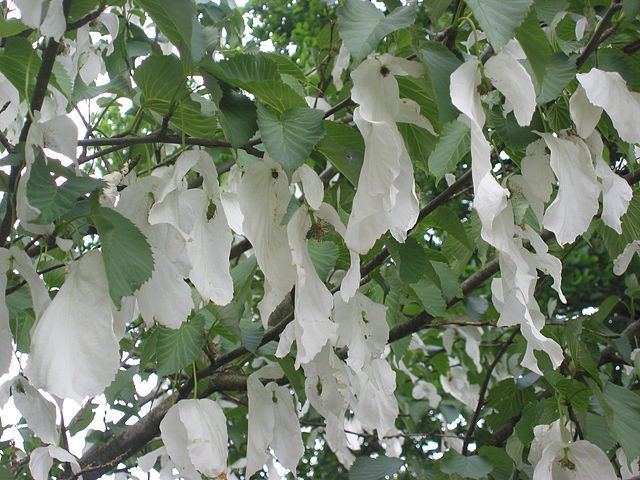 | ||
Similar Nyssaceae, Katsura, Tulip poplar, Metasequoia glyptostroboides, Parrotia | ||
Davidia involucrata
Davidia involucrata, the dove-tree, handkerchief tree, pocket handkerchief tree, or ghost tree, is a medium-sized deciduous tree in the family Nyssaceae. It was previously included with tupelos in the dogwood family, Cornaceae. It is native to South Central and Southwest China from Hubei to southern Gansu, south to Guizhou, Sichuan and Yunnan, but is widely cultivated elsewhere.
Contents

Davidia involucrata
Taxonomy
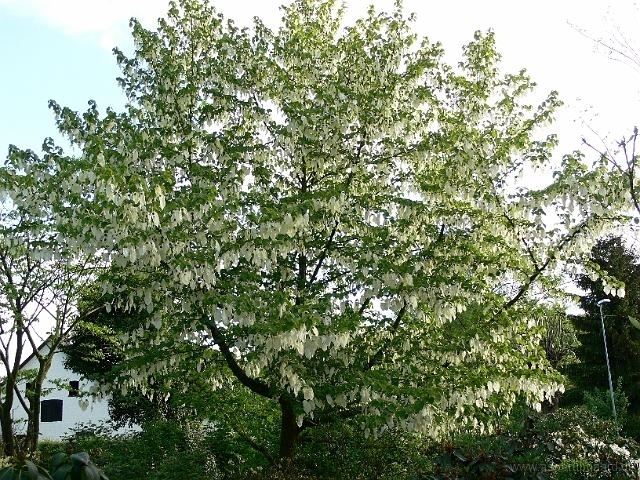
Davidia involucrata is the only member of its genus, but there are two varieties differing slightly in their leaves, D. involucrata var. involucrata, which has the leaves thinly pubescent (short-haired) on the underside, and D. involucrata var. vilmoriniana, with glabrous (hairless) leaves. Some botanists treat them as distinct species, with good reason, as the two taxa have differing chromosome numbers so are unable to produce fertile hybrid offspring.
Description
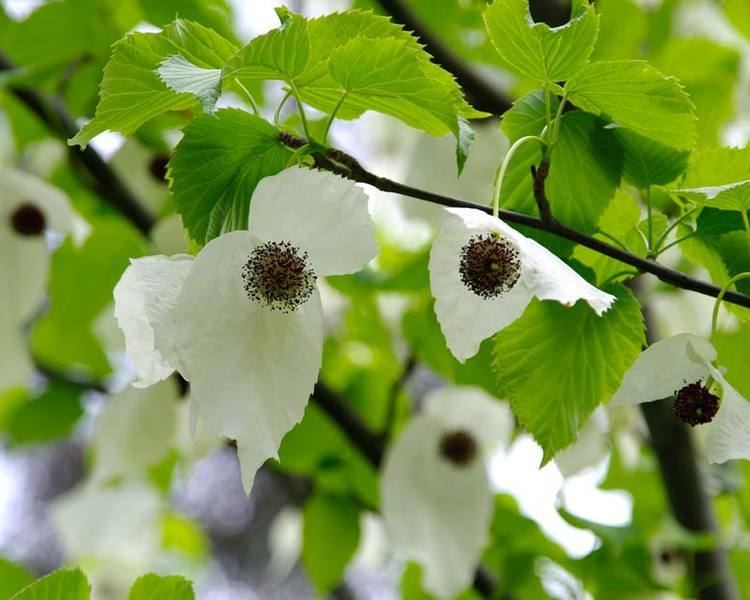
It is a moderately fast-growing tree, growing to 20–25 m (66–82 ft) in height, with alternate cordate leaves resembling those of a linden in appearance, except that they are symmetrical, and lacking the lop-sided base typical of linden leaves; the leaves are mostly 10–20 cm long and 7–15 cm wide and are ovate to heart-shaped.
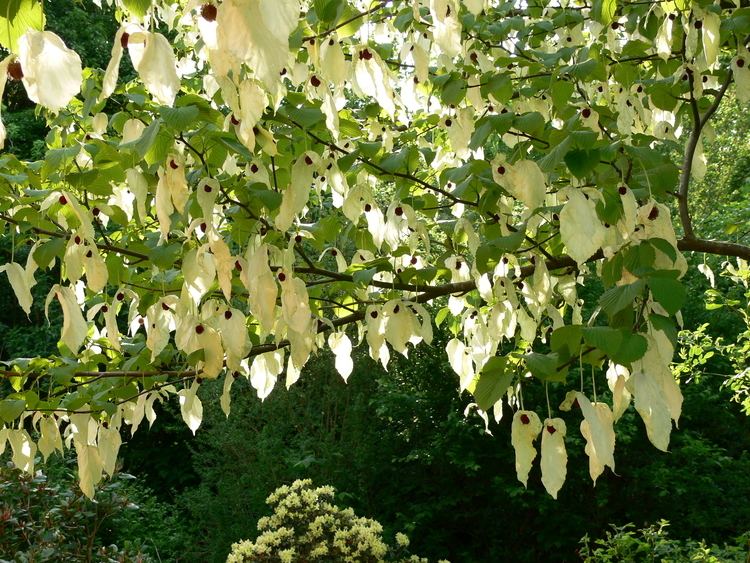
Davidia involucrata is best known for its flowers. The Latin specific epithet involucrata means "with a ring of bracts surrounding several flowers". These form a tight cluster about 1–2 cm across, reddish in colour, each flower head with a pair of large (12–25 cm), pure white bracts at the base performing the function of petals. These hang in long rows beneath the level branches. The flowers are at their best in late May. On a breezy day, the bracts flutter in the wind like white doves or pinched handkerchiefs, hence the English names for this tree.
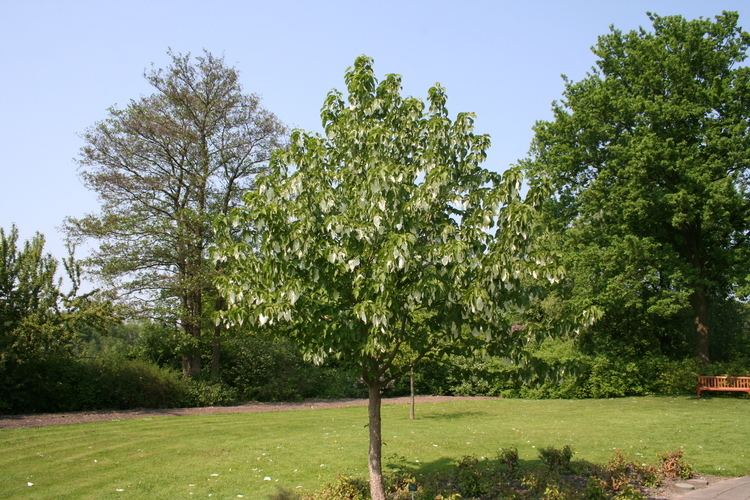
The fruit is a very hard nut about 3 cm long surrounded by a green husk about 4 cm long by 3 cm wide, hanging on a 10 cm stalk. The nut contains 3–6 seeds.
History

The genus Davidia is named for Father Armand David (1826–1900; "Père David"), a French Vincentian missionary and keen naturalist who lived in China. David first described the tree in 1869 as a single tree found at over 2,000 m (6,562 ft) altitude, and sent dried specimens to Paris; in 1871, Henri Baillon described it as a new genus and species.
Scottish plant hunter Augustine Henry again found a single tree, this time in the Yangtse Ichang gorges and sent the first specimen to Kew Gardens. Plant collector Ernest Henry Wilson was employed by Sir Harry Veitch to find Henry's tree but arrived to find that it had been felled for building purposes; however, he later found a grove of the trees overhanging a sheer drop. Returning to England, Wilson had his boat wrecked, but managed to save his Davidia specimens.
Fossil record
The oldest probable fossils of Davidia are permineralized fruits from the Upper Cretaceous (Campanian) Horseshoe Canyon Formation of Dinosaur Provincial Park near Drumheller, Alberta, Canada. Those fruits are smaller than those of D. involucrata and have fewer locules, but are otherwise similar in morphology to the extant genus.
In 2009, B. I. Pavlyutkin described Miocene fossils in Primorsky Krai and assigned them to a new species in the genus Davidia.
In gardens
The species was introduced from China to Europe and North America in 1904, and is a popular ornamental tree in parks and larger gardens. Most trees in cultivation are var. vilmoriniana, which has proved much better able to adapt to the climatic conditions in the west.
In the United Kingdom, D. involucrata can be seen in many gardens and estates including the Kew Gardens in London, Speke Hall in Liverpool, the Parkland Estate of Rufford New Hall in Lancashire, at Sizergh Castle in Cumbria, the Marks Hall Estate in Essex, Wayford Woods on the Somerset/Dorset border, Kenwood House, Hampstead, London, Hempstead Hall in Holt, Norfolk, Queenswood in Herefordshire, and The Lost Gardens of Heligan in Cornwall. Notable specimens can also be seen in the Priory Park, Great Malvern, at Rowallane Gardens in County Down, Northern Ireland and Keele University, Staffordshire, Colchester Royal Grammar School, Essex, Fingask Castle, Perthshire, and Belsay Hall, Northumberland. In Ireland, D. involucrata can be seen at Fota House, Arboretum & Gardens.Northampton,Abington Museum Park, Tamar valley, in Scotland D. involucrata can be seen at the Royal Botanic Garden Edinburgh.
This tree has gained the Royal Horticultural Society's Award of Garden Merit.
